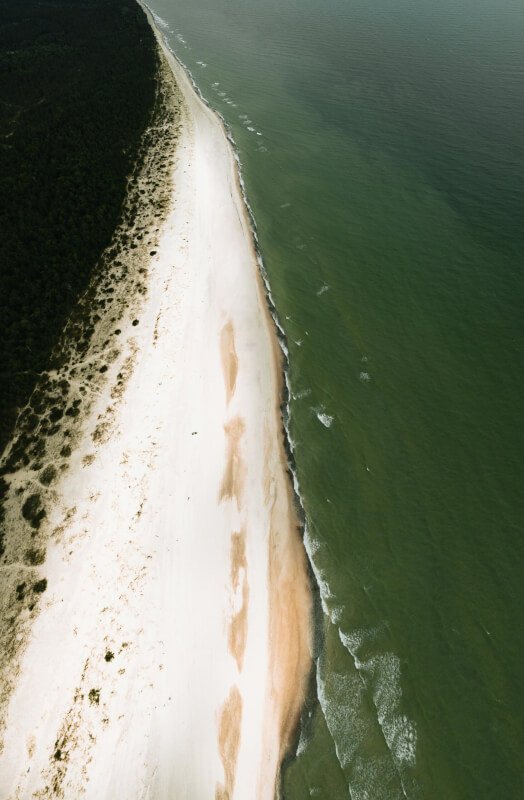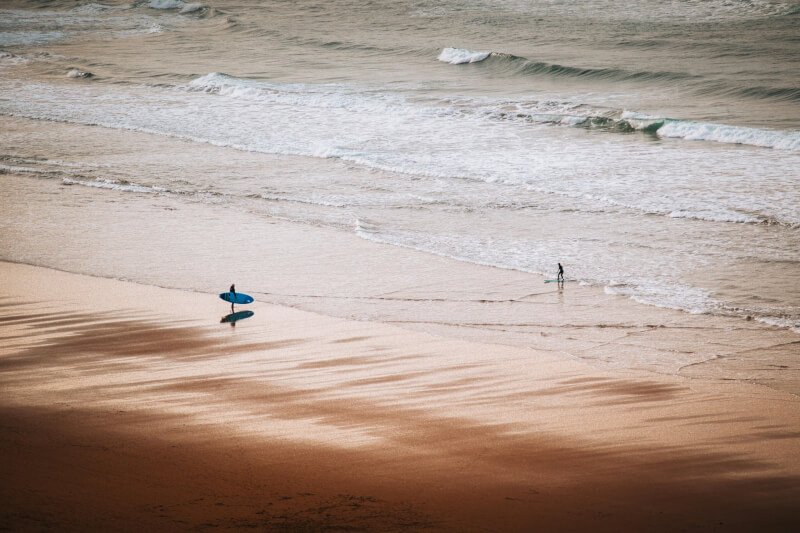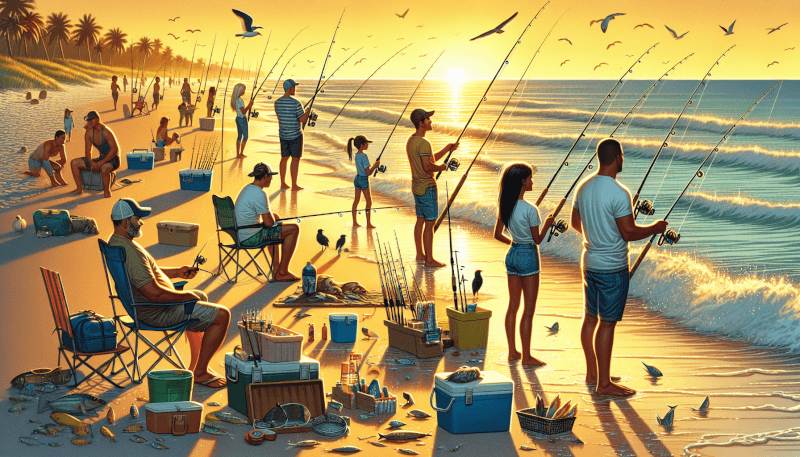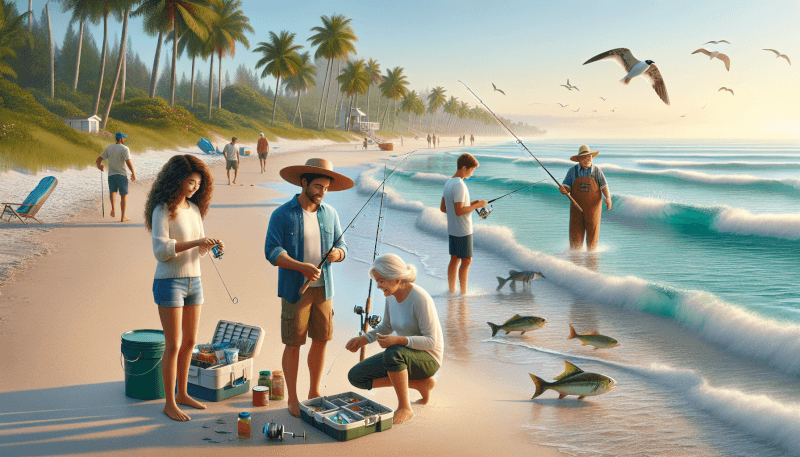If you’re heading to the sunny shores of Florida and have a desire to cast your line into the sparkling waves, then this article is for you. Packed with helpful tips and techniques, we’ll guide you through the essentials of beach fishing in Florida. Whether you’re a seasoned angler looking for new insights or a beginner eager to learn the ropes, we’ve got you covered. From choosing the right gear to understanding the best spots to cast your bait, get ready to reel in some unforgettable beach fishing experiences in the Sunshine State. So grab your fishing rod, dig your toes into the sand, and let’s get started on this exciting adventure!

Choosing the Right Gear
When it comes to beach fishing in Florida, having the right gear is essential. To start, you’ll need to select the right rod and reel for the type of fishing you plan to do. For light saltwater fishing, a medium-action spinning rod paired with a spinning reel is a popular choice. This combination offers versatility and ease of use.
Next, you’ll want to pick the proper fishing line. In Florida’s saltwater environment, a monofilament line with a test strength of 10 to 20 pounds is a good all-around choice. This line provides the strength needed to handle larger fish while still allowing for a good casting distance.
In addition to the rod, reel, and fishing line, choosing the appropriate hooks is crucial. For beach fishing, circle hooks are popular due to their higher hook-up rates and lower likelihood of causing harm to the fish. Make sure to select hooks that are suitable for the size and species of fish you’re targeting.
Lastly, selecting the right bait is key to attracting fish. Different fish species have different preferences, so it’s important to do some research and understand what type of bait is most effective. Common choices for beach fishing in Florida include live shrimp, sand fleas, and cut bait.
Understanding Tides and Currents
When fishing from the beach in Florida, understanding tides and currents is essential for success. Learning about Florida’s tidal patterns can help you predict when the fish will be most active and where they are likely to be located. It’s important to know when the tide is rising or falling, as this can impact fish behavior.
Currents also play a significant role in fishing. The movement of water can affect where fish gather, as well as their feeding patterns. Recognizing the impact of currents on fishing will help you adjust your strategies accordingly.
To adjust your fishing strategies based on tides and currents, consider fishing during the incoming tide, as this is typically when the water is moving and bringing new food sources for the fish. You can also try fishing near structures like jetties or piers, where the movement of water creates eddies and attracts fish.

Identifying the Best Fishing Spots
To maximize your chances of catching fish while beach fishing in Florida, it’s important to identify the best fishing spots. Start by researching potential fishing locations in the area you plan to visit. Look for beaches with a good reputation for fishing and check local fishing reports for recent activity.
Once you’re at the beach, focus on finding structure and cover. Fish are often attracted to areas with natural or man-made structures like rock formations, piers, or submerged vegetation. These structures provide shelter and attract smaller bait fish, which in turn attract larger predators.
Also, keep an eye out for beach drop-offs and sandbars. These features create changes in water depth, creating ideal conditions for fish to feed. Areas where the beach drops off into deeper water or where sandbars form can be productive fishing spots.
Casting Techniques
Mastering different casting techniques will greatly improve your beach fishing skills. The overhead cast is one of the most common and versatile casting techniques. Start by holding your rod above your shoulder and bringing it forward in a smooth motion, releasing the line at the right moment to send your bait or lure into the water.
Another casting technique to consider is the sidearm cast. This technique is useful when you need to cast under low-hanging obstructions or when fishing in areas with limited space. Hold your rod parallel to the ground and swing it forward, releasing the line to cast your bait or lure.
The roll cast is a technique that allows you to cast with minimal space behind you. Start by bringing your rod tip close to the water’s surface, then flick it forward in a quick motion, using the tension in the line to propel your bait or lure.
Practice these casting techniques to improve your accuracy and distance, and remember to always be mindful of your surroundings to avoid tangling your line or hitting other people while casting.

Knowing Your Target Species
To increase your chances of catching fish while beach fishing in Florida, it’s important to know your target species. Learning about the common fish species in Florida will help you understand their habits and behaviors, as well as the best techniques to use when targeting them.
Florida is known for its diverse fish population, including species like snook, redfish, tarpon, trout, and pompano, among others. Each species has its own preferred habitat and feeding patterns, so take the time to research and understand their characteristics.
For example, snook are often found near structures like jetties or bridges and are known for their aggressive strikes. Redfish are commonly found in grassy areas or around oyster beds and respond well to live bait. Tarpon, on the other hand, are known for their acrobatic jumps and prefer large, live baits.
By choosing the right techniques and baits for your target species, you’ll greatly increase your chances of success while beach fishing in Florida.
Bait and Lure Selection
When it comes to beach fishing in Florida, choosing the right bait and lures can make a significant difference in your success. If you prefer using live bait, options like live shrimp, sand fleas, or even small fish like mullet or pilchards can be highly effective.
Artificial lures are also popular among beach anglers in Florida. Soft plastic jigs, spoons, and topwater lures are commonly used and can mimic the movement of natural baitfish. Experiment with different colors and sizes to see what the fish are most responsive to.
For the best results, consider using a combination of live bait and artificial lures. This will give you the flexibility to adapt to changing fishing conditions and maximize your chances of enticing a bite.

Tackle Organization and Maintenance
Proper organization and maintenance of your fishing tackle is essential for a successful and enjoyable beach fishing experience. Keep your tackle box well-organized by arranging your lures, hooks, and sinkers in separate compartments or using tackle trays.
Regularly clean and maintain your fishing gear to ensure optimal performance. Rinse your rods and reels with freshwater after each use to remove any salt or sand. Check your fishing line for any signs of wear or damage, and replace it if necessary. Inspect your hooks, swivels, and other terminal tackle for any rust or corrosion, and replace them as needed.
By keeping your tackle organized and maintaining your gear properly, you’ll be prepared for any fishing situation and extend the lifespan of your equipment.
Safety Precautions
When beach fishing in Florida, it’s important to prioritize safety. Start by staying aware of weather conditions. Florida can experience sudden thunderstorms and lightning strikes, so check the forecast before heading out and be prepared to seek shelter if necessary.
Proper sun protection is also crucial. Florida’s strong sun can lead to sunburn and heatstroke, so make sure to wear sunscreen, a hat, and sunglasses. Stay hydrated by drinking plenty of water and seek shade when needed.
Lastly, be mindful of wildlife and marine life. Florida’s coastal areas are home to various creatures like sharks, jellyfish, and stingrays. Keep a safe distance and understand how to handle encounters with these species.
By taking these safety precautions, you can enjoy your beach fishing experience in Florida while minimizing potential risks.

Fishing Etiquette
One aspect of beach fishing often overlooked is fishing etiquette. Remember to respect other anglers’ space by not casting too close to them or interfering with their lines. Give them ample room to fish comfortably and avoid causing any unnecessary disruptions.
It’s also important to follow fishing regulations and bag limits. Familiarize yourself with the rules and regulations specific to the area you’re fishing in, such as size and bag limits for certain fish species. These regulations are in place to protect the fish population and ensure sustainable fishing for years to come.
Lastly, clean up after yourself. Dispose of any trash or fishing lines properly and leave the beach in the same condition, or even better, than when you arrived. By practicing good fishing etiquette, you contribute to a positive fishing community and help preserve the beauty of Florida’s beaches.
Tips for Fishing with Kids
Fishing with kids can be a rewarding and memorable experience. To make it fun and educational for them, involve them in the process from start to finish. Teach them basic fishing skills and safety, such as how to cast, handle fish properly, and use sunscreen.
Make the experience interactive by explaining the different species of fish you may encounter and their characteristics. Engage their senses by allowing them to touch and observe live bait or lures. Encourage them to ask questions and learn about the environment they’re in.
Creating lifelong memories is the ultimate goal when fishing with kids. Take plenty of photos and celebrate their successes, whether it’s catching their first fish or simply enjoying a day on the beach. By fostering a love for fishing early on, you can create lasting traditions and pass on the joy of the sport to future generations.


